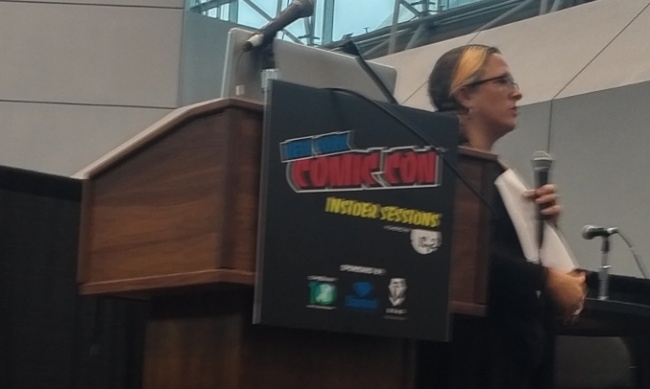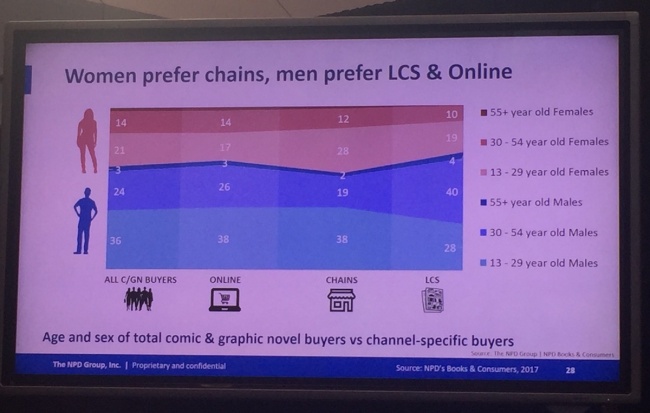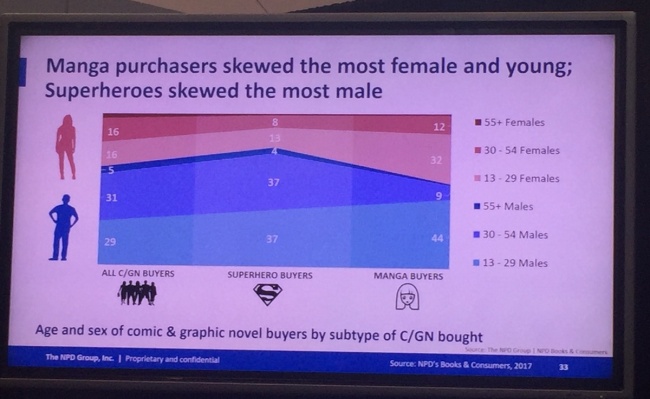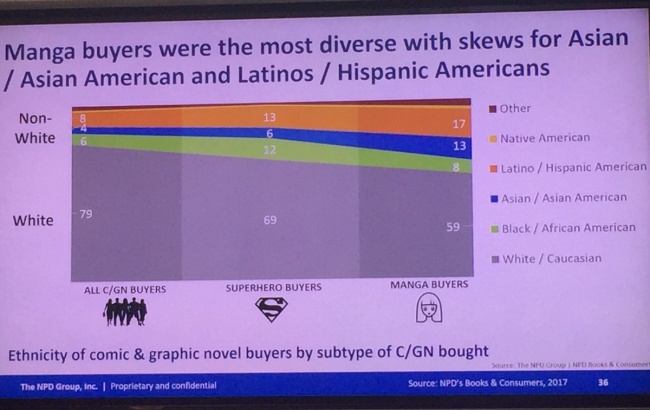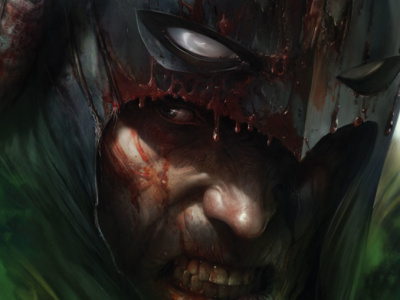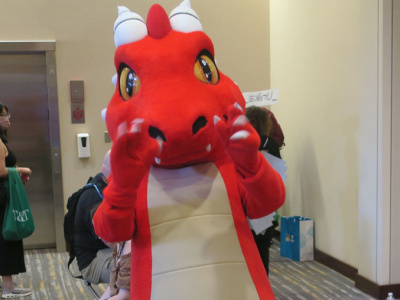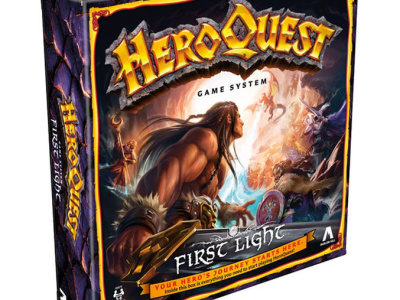At the New York Comic Con Insider Sessions Powered by ICv2, Kristen McLean of NPD BookScan broke out some demographic data, based on a 72,000-person book buying consumer panel, about who is buying graphic novels, what they are buying, and where they are buying them.
What she is seeing is a young market—but only in certain sectors.
McLean’s presentation began with a look at the big picture that showed sales in the book channel have been strong, while sales in the direct market have been relatively flat (see “NYCC Sessions Powered by ICv2: Bookstores Could Surpass Comic Stores by 2020”).
"I think we're in the middle of a channel shift," McLean said, "but more than just an established customer buying stuff in the new channel, I actually am seeing a whole demographic coming up behind the consumers that we have been doing business with for the last couple of decades, and that's to me is the most exciting thing of all."
Then she broke out some consumer data to take a hard look at the comics-buying public.
In terms of gender and age,
- 63% of comics and graphic novels are purchased by men, 37% by women;
- 57% of comics and graphic novels are bought by 13-29 year olds;
Then she drilled down a little further into the different groups:
- Less than half (47%) of comics sold in comic shops are bought by 13-29 year olds;
- 72% of purchases in comic shops are by men, with 30-50 year olds the largest age category;
- 59% of purchases in chain stores are by men, with 13-29 as the largest age category for both men and women;
- 67% of online purchases are by men, and for both men and women, the largest group is 13-20-year-olds.
- Comic shop shoppers are more likely to have some college education (85%) than the general comics and graphic novel-buying population (73%);
- Overall, the comics and graphic novel-buying public is 69% (non-Hispanic) white, 12% Latino, 10% African American, and 8% Asian;
- By contrast, the breakdown in comic shops is 71% white, 13% Latino, 14% black, and 5% Asian;
- 33% of all comics and graphic novel buyers have incomes below $35,000; in comic shops, 41% have incomes lower than $35,000
And finally, she looked at the differences between superhero purchasers and manga purchasers:
- Superhero buyers skew heavily male (78%);
- Manga buyers are more evenly divided, with 56% male and 44% female;
- Manga buyers are younger: 76% under 30;
- By contrast, 50% of superhero buyers are under 30;
- The male superhero audience is evenly balanced between the 13-29 and 30-54 age groups;
- Female superhero buyers, on the other hand, skew younger;
- Superhero buyers are more likely to have graduated college (perhaps because so many manga fans are younger);
- Manga buyers are more likely to have a household income under $35,000 (43% of the manga audience vs. 27% of the overall comics audience);
- In terms of racial/ethnic balance, the manga audience is more diverse (59% white) than either the overall comics market (79% white) or superhero comics buyers (69% white).
While the geographic distribution of comics and graphic novel sales via BookScan looks a lot like the geographic distribution of the population as a whole—with strong sales on the coasts and New York, Los Angeles, and San Francisco leading the pack—McLean also noted some cities where sales were stronger than would be expected: Portland, Maine, Portland Oregon, and Jacksonville, Florida led that list, and even two of the top three markets, Los Angeles and San Francisco, performed better than expected for their sizes.



